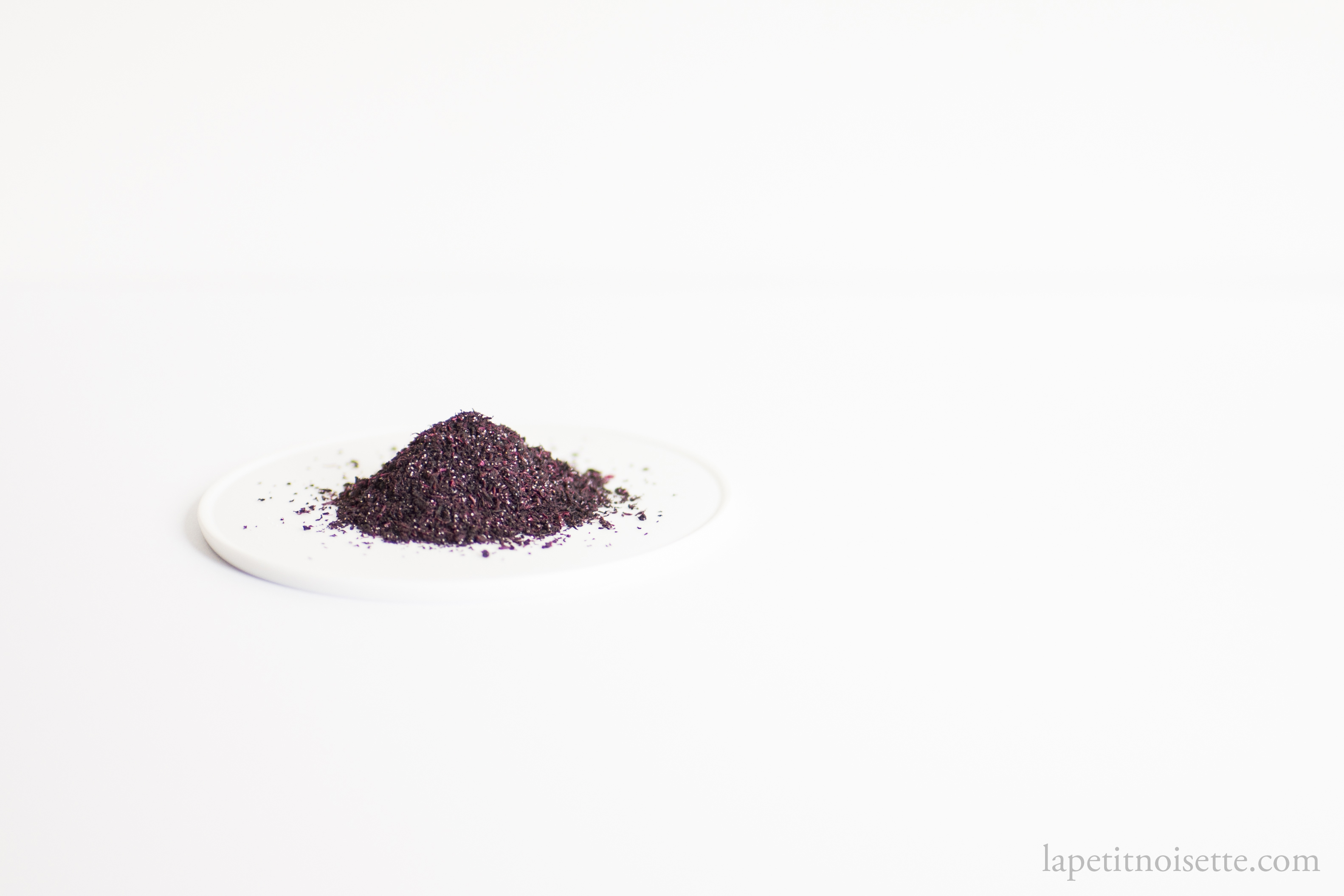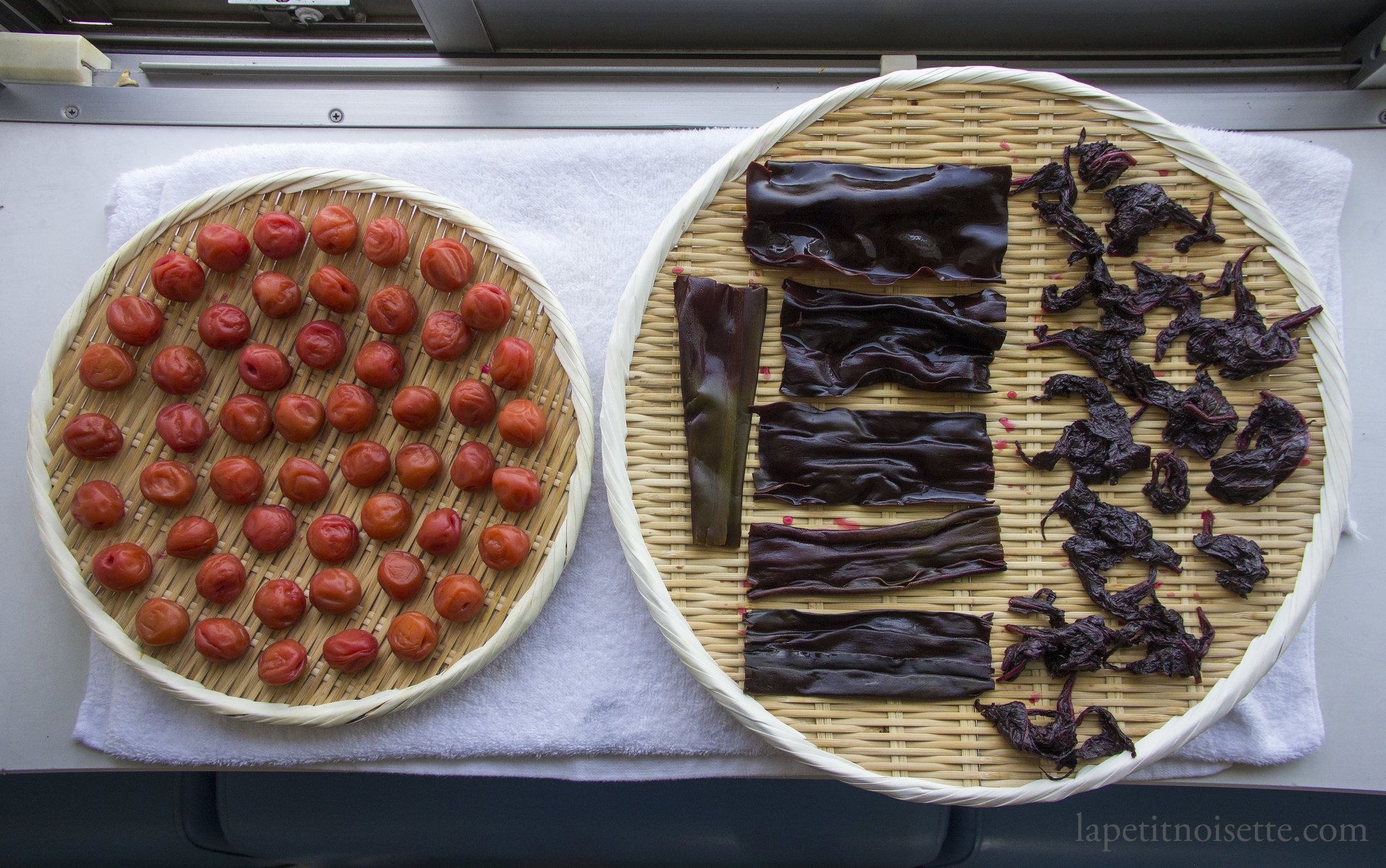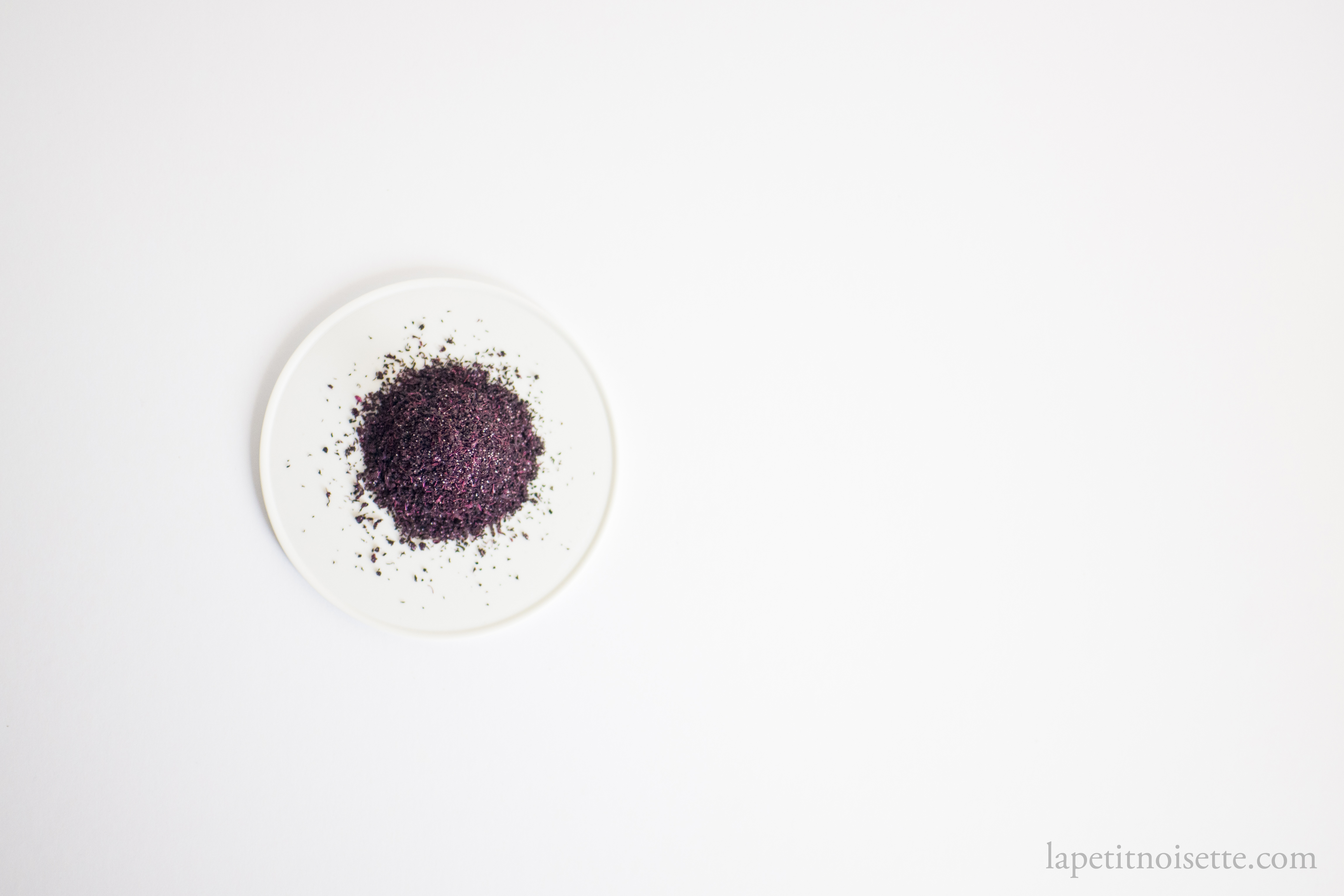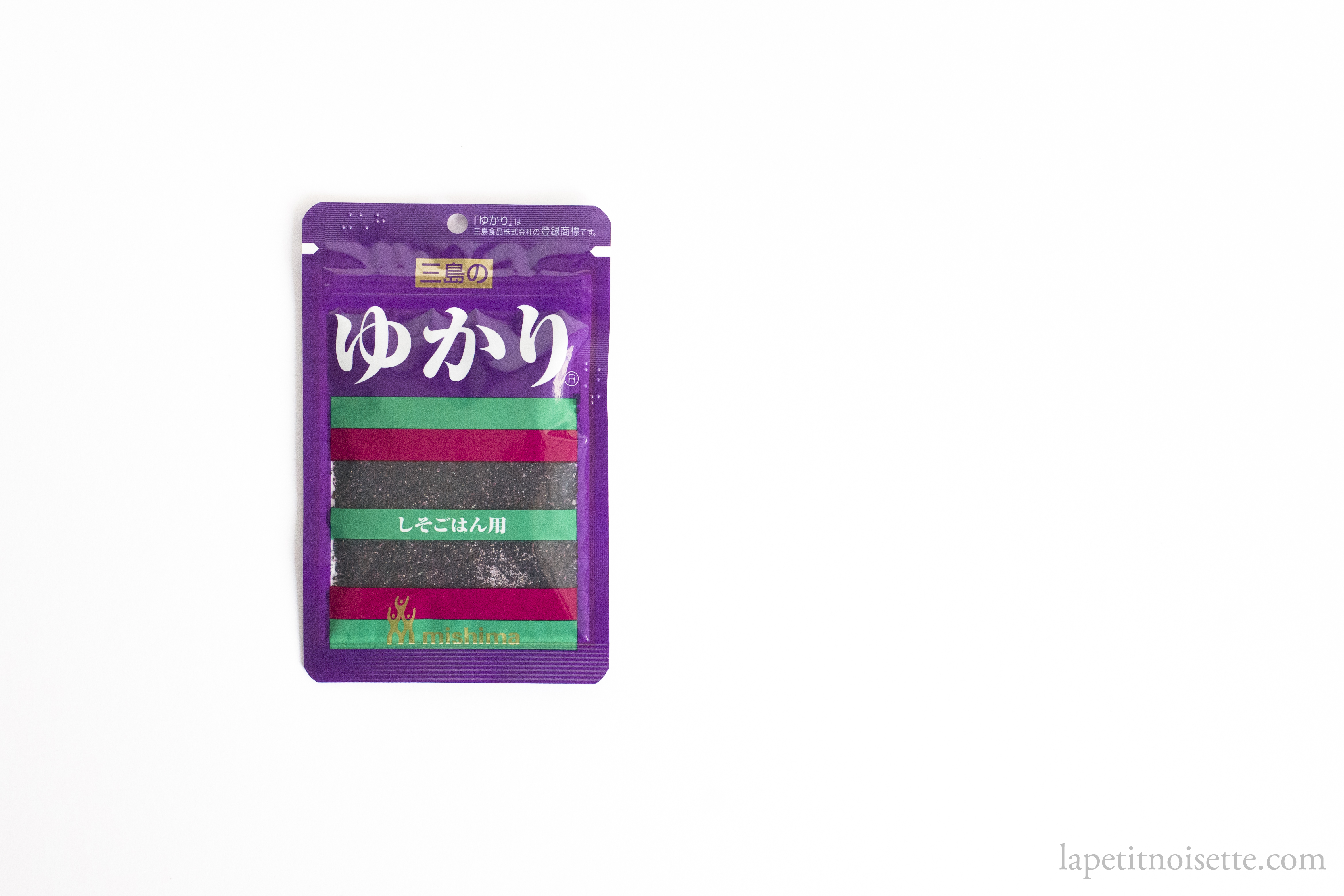
This recipe is a by-product of making umeboshi, which you can read here.
One of the by-products of making umeboshi at home is the red shiso leaves that were used to dye the umeboshi their classic red colour (unless you opted for without it). One of the benefits of these red shiso leaves however, are that at the same time they’ve been colouring the umeboshi, they’ve been brining and fermenting in the salty juice of the unripe Japanese plums (ume/梅). On their own, they’re far too astringent and salty to consume, but are traditionally ground into a powder to use as a rice seasoning called yukari (ゆかり).
When your umeboshi are dried in the sun after they’ve been brined sufficiently, the now salted red shiso leaves are also typically sun dried at the same time. Sometimes, when the umeboshi are packed back into their jars to further age, the shiso leaves are added on top of the umeboshi to act as a layer of anti-mold growing protection.
However, the shiso leaves can actually be separated and ground up in a Japanese suribachi (擂鉢) grinding bowl and surikogi (擂粉木) pestle. The stems of the shiso leaves can sometimes be quite hard to grind up, leaving large bits in the mortar. To obtain a fine yukari powder, the ground leaves are sieved through a strainer and the remaining large bits are placed back into the mortar with additional shiso leaves and ground again. This is repeated over and over again until all the shiso leaves are ground, and the remaining large bits are discarded.

If you made your umeboshi with a low salt percentage of around 7-9% of the ume’s weight in salt. You can add a little salt to the dried shiso leaves to increase the saltiness, but I actually prefer yukari made from shiso leaves used to colour low salt umeboshi, as you get more shiso flavour rather than just saltiness.
If you made umeboshi without using red shiso leaves but still want to make yukari, you can retain the liquid leftover from making the umeboshi, which is known as ume vinegar (umezu/梅酢) and soak fresh red shiso leaves in them for 3 to 5 days, before squeezing them out and drying them in the sun to grind into your own seasoning. Some recipes call for adding one third of the red shiso leaves’ weight in salt before grinding them, but I personally find this too much salt as ume vinegar itself can be quite salty.

Homemade Yukari Rice Seasoning
- Leftover red shiso (perilla) leaves used to colour umeboshi
Traditional method
Assuming you haven’t dried the shiso leaves yet, squeeze out any liquid from them and lay them out on any tray or bamboo colander to dry. Ideally you’d want to spread out the leaves to let them dry quickly and grind easier, but it might be hard as they have a tendency to be slightly clumpy at this point. Leave the tray out in the sun until the perilla leaves become dry and brittle, which can be as short as 1 day in very hot and dry places, or a couple of days in more humid and cloudy places.
Add the dried shiso leaves to a mortar and pestle and grind into a powder. To achieve a fine powder, don’t add too many leaves at the same time to leave ample room for a large grinding motion. Pass the powder through a sieve to remove any large remaining bits. Add the large bits left in the sieve back into the mortar and add more shiso leaves and repeat the same process until all the leaves have been ground up. During the last sieve, discard any large bits remaining unless you don’t mind your rice seasoning quite course. Store in a dry bottle and sprinkle as rice seasoning.

Modern kitchen method
After squeezing out any excess liquid, spread out the leaves onto the plate and microwave for 30 seconds until the leaves are dry and brittle, if not, microwave for an additional 10 seconds and check. Repeat until the leaves are brittle. This can be done in an oven at a low temperature as well, at around 80°C for 2 to 3 hours until the leaves crumble easily.
Add all the leaves to a food processor and blitz until a fine powder is created. Store in a dry bottle and sprinkle as rice seasoning.
If you live in a dry place with very little humidity, the yukari powder can last almost indefinitely, though it will lose its potency over time. If you live in a humid environment, I recommend storing the yukari with a packet of food desiccant if you can find it.